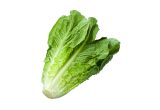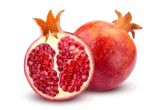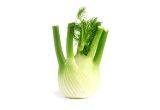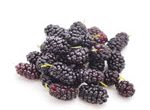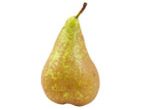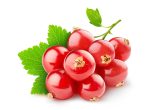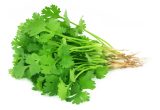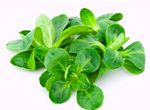Grapes (black)

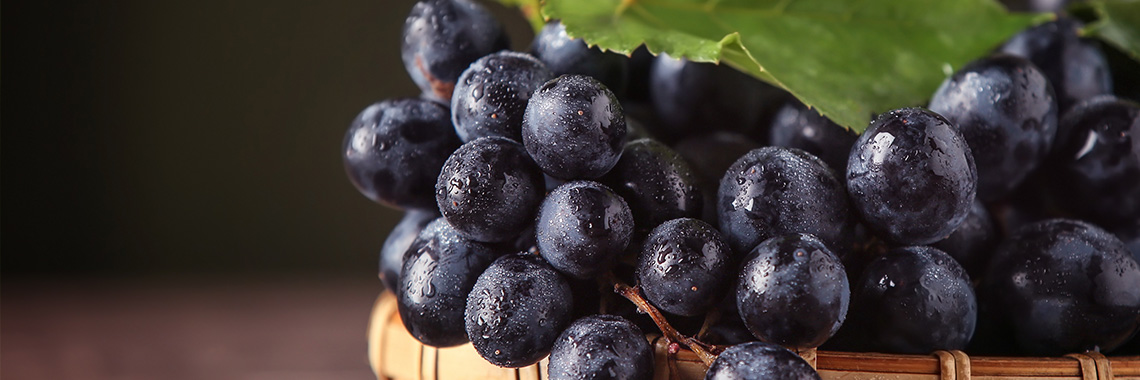
Description
- The grape (Vitis vinifera) belongs to the Vitaceae family.
- With an estimated global area of over 7 million hectares, it is one of the most widely grown fruits in the world (FAOSTAT, 2019).
PHYSICAL AND ORGANOLEPTIC CHARACTERISTICS
- Grapes are rich in polyphenols (Perestrelo, 2014; Rodriguez-Casado, 2016; Xia, 2010). These play an important role in the quality of the grape especially due to their contribution to taste and colour.
- Flavonols and flavan-3-ols contribute to the astringency and bitterness of grapes (Drewnowski, 2000).
- Black grapes owe their more or less dark red colour to anthocyanins, and in particular to malvidin-3-O-glucoside. This compound is mostly present in the skin and its contents increase strongly with ripeness (Wong, 2016; Ferreira, 2016, Iglesias-Carres, 2018; Aubert, 2018).
- Grapes are mainly appreciated by consumers for their sweetness, juiciness and aroma. Aroma is one of the key factors contributing to the quality of the grape, and generally the typical aroma of the so-called Muscat varieties is highly appreciated by consumers. Unlike neutral varieties which contain few volatile aroma compounds, Muscat varieties are rich in monoterpenols (linalool, geraniol, nerol, etc.), compounds responsible for their characteristic floral aroma (Mateo, 2000).
COMPOSITION CHARACTERISTICS (excluding macronutrients, vitamins and minerals)
- Due to their high levels of phytomicronutrients (carotenoids, polyphenols, etc.), many studies have shown that regular consumption of grapes is linked to a reduced risk of developing chronic diseases, including some types of cancer and cardiovascular diseases (Iriti, 2009; Yang, 2013; Costa, 2017).
- Polyphenol composition of black grapes:
- The majority polyphenols are anthocyanins, followed by hydroxycinnamic acids and flavan-3-ols (Iglesias-Carres, 2018; Aubert, 2018).
- Among other compounds catechin, epicatechin (flavan-3-ols) and caftaric acid (hydroxycinnamic acid) are the most abundant (Iglesias-Carres, 2018; Ferreira, 2016; Aubert, 2018).
- If polyphenolic compounds are generally present in the skin of grapes, hydroxycinnamic acids are mainly located in the pulp and flavan-3-ols in the seeds (Cheynier, 1986; Farhadi, 2016).
- Black grapes also contain stilbenes. In particular, trans-resveratrol and its glucoside derivative, piceid, compounds that are well known for their biological effects on health due to their antioxidant, anticarcinogenic and antitumour properties, among others (Perestrelo, 2014; Shahidi, 2015; Xia, 2010).
- Black grapes generally contain more trans-resveratrol than white grapes (Gatto, 2008). A recent study showed that the Alphonse Lavallée variety had levels 9 to 14 times higher than those observed in some white or pink varieties (Aubert, 2018).
- Black grapes also contain carotenoids, the most abundant of which are β-carotene and lutein (Bunea, 2012; Gutiérrez-Gamboa, 2018; Aubert, 2018).
Recent studies have also shown that monoterpenols, present in grapes (and in particular in Muscat varieties) also possess various pharmacological properties including antifungal, antibacterial, antioxidant, anticancer and antispasmodic activity (Karkabounas, 2006; Perestrelo, 2014; Thoppil, 2011).
FRESH
The following values are approximate and depend on variety, season, ripeness, cultivation conditions, etc.
Black Muscat grapes provide an average of 90.10 calories (kcal) per 100 g, i.e. 381 kJ.
COMPOSITION TABLES
For each nutrient, the tables provide information on the content, minimum and maximum values, as well as the percentage of the Dietary Reference Values (DRVs) per 100 g net of Chasselas white grapes.
MACRONUTRIENTS
| Constituent (g) | Average content |
Min-Max per 100g |
DRV% |
|---|---|---|---|
| Water | 76,70 | - | - |
| Fibers | 2,70 | - | - |
| Carbohydrates | 20 | 0 - NC | 7,69 |
| Sugars | 19,60 | - | 21,78 |
| Lipids | < 0,50 | - | - |
| Saturated fat | < 0,01 | - | - |
| Protein | 0,69 | NC - 0,70 | 1,38 |
| Constituent (g) | Amount | Min-Max | DRV% |
|---|---|---|---|
| Water | Ciqual 2020 (valeur issue des analyses Ciqual-Aprifel 2017) | - | - |
| Fibers | Ciqual 2020 (valeur issue des analyses Ciqual-Aprifel 2017) | - | - |
| Carbohydrates | Ciqual 2020 | - | Règlement (UE) N°1169/2011 du parlement Européen et du conseil du 25 octobre 2011 |
| Sugars | Ciqual 2020 (valeur issue des analyses Ciqual-Aprifel 2017) | - | Règlement (UE) N°1169/2011 du parlement Européen et du conseil du 25 octobre 2011 |
| Lipids | Ciqual 2020 (valeur issue des analyses Ciqual-Aprifel 2017) | - | Règlement (UE) N°1169/2011 du parlement Européen et du conseil du 25 octobre 2011 |
| Saturated fat | Ciqual 2020 (valeur issue des analyses Ciqual-Aprifel 2017) | - | Règlement (UE) N°1169/2011 du parlement Européen et du conseil du 25 octobre 2011 |
| Protein | Ciqual 2020 (valeur issue des analyses Ciqual-Aprifel 2017) | - | Règlement (UE) N°1169/2011 du parlement Européen et du conseil du 25 octobre 2011 |
Zoom on carbohydrates
- The energy of the black grape comes essentially from its carbohydrates, up to 20 g per 100 g.
- This amount is well above the average amount found in fresh fruit (11.31 g per 100 g).
- These are mainly fructose (9.80 g per 100 g) and glucose (9.80 g per 100 g).
Zoom on fibres
- Black grapes contain a significant amount of fibre (2.70 g per 100 g), but this is still slightly lower than the average quantity found in fresh fruit (2.77 g per 100 g).
Zoom on proteins
- Their protein content (0.69 g per 100 g) is lower than the average amount found in fresh fruit (0.93 g per 100 g).
Zoom on lipids
- Black grapes are fat-free* as they contain less than 0.5 g of fat per 100 g
* Regulation (EC) No 1924/2006 of the European Parliament and of the Council of 20 December 2006 on nutrition and health claims made on foods.
MINERALS AND TRACE ELEMENTS
| Constituent | Average content |
Min-Max per 100g |
DRV% |
|---|---|---|---|
| Calcium (mg) | 13 | - | 1,63 |
| Chloride (mg) | < 20 | - | - |
| Copper (mg) | 0,12 | - | 12 |
| Iron (mg) | 0,22 | - | 1,57 |
| Iodine (µg) | < 20 | - | - |
| Magnesium (mg) | 7,30 | - | 1,95 |
| Manganese (mg) | 0,09 | - | 4,50 |
| Phosphorus (mg) | 20 | - | 2,86 |
| Potassium (mg) | 210 | - | 10,50 |
| Selenium (µg) | < 20 | - | - |
| Sodium (mg) | < 5 | - | - |
| Zinc (mg) | 0,06 | - | 0,60 |
| Constituent | Amount | Min-Max | DRV% |
|---|---|---|---|
| Calcium (mg) | Ciqual 2020 (valeur issue des analyses Ciqual-Aprifel 2017) | - | Règlement (UE) N°1169/2011 du parlement Européen et du conseil du 25 octobre 2011 |
| Chloride (mg) | Ciqual 2020 (valeur issue des analyses Ciqual-Aprifel 2017) | - | Règlement (UE) N°1169/2011 du parlement Européen et du conseil du 25 octobre 2011 |
| Copper (mg) | Ciqual 2020 (valeur issue des analyses Ciqual-Aprifel 2017) | - | Règlement (UE) N°1169/2011 du parlement Européen et du conseil du 25 octobre 2011 |
| Iron (mg) | Ciqual 2020 (valeur issue des analyses Ciqual-Aprifel 2017) | - | Règlement (UE) N°1169/2011 du parlement Européen et du conseil du 25 octobre 2011 |
| Iodine (µg) | Ciqual 2020 (valeur issue des analyses Ciqual-Aprifel 2017) | - | Règlement (UE) N°1169/2011 du parlement Européen et du conseil du 25 octobre 2011 |
| Magnesium (mg) | Ciqual 2020 (valeur issue des analyses Ciqual-Aprifel 2017) | - | Règlement (UE) N°1169/2011 du parlement Européen et du conseil du 25 octobre 2011 |
| Manganese (mg) | Ciqual 2020 (valeur issue des analyses Ciqual-Aprifel 2017) | - | Règlement (UE) N°1169/2011 du parlement Européen et du conseil du 25 octobre 2011 |
| Phosphorus (mg) | Ciqual 2020 (valeur issue des analyses Ciqual-Aprifel 2017) | - | Règlement (UE) N°1169/2011 du parlement Européen et du conseil du 25 octobre 2011 |
| Potassium (mg) | Ciqual 2020 (valeur issue des analyses Ciqual-Aprifel 2017) | - | Règlement (UE) N°1169/2011 du parlement Européen et du conseil du 25 octobre 2011 |
| Selenium (µg) | Ciqual 2020 (valeur issue des analyses Ciqual-Aprifel 2017) | - | Règlement (UE) N°1169/2011 du parlement Européen et du conseil du 25 octobre 2011 |
| Sodium (mg) | Ciqual 2020 (valeur issue des analyses Ciqual-Aprifel 2017) | - | - |
| Zinc (mg) | Ciqual 2020 (valeur issue des analyses Ciqual-Aprifel 2017) | - | Règlement (UE) N°1169/2011 du parlement Européen et du conseil du 25 octobre 2011 |
Zoom on minerals and trace elements
- Black grapes contain a significant amount of copper and potassium. They provide the equivalent of:
- 12% of DRVs for copper, i.e. 0.12 mg per 100 g;
- 10.50% of DRVs for potassium, i.e. 210 mg per 100 g.
- The amount of other minerals is less than 5% of DRVs.
VITAMINS
| Constituent | Average content |
Min-Max per 100g |
DRV% |
|---|---|---|---|
| Provitamin A Beta-carotene (µg) | 67,70 | - | - |
| Vitamin A equivalent (µg) | 11,28 | - | 1,41 |
| Vitamin B1 (mg) | 0,057 | - | 5,18 |
| Vitamin B2 (mg) | < 0,01 | - | - |
| Vitamin B3 (mg) | < 0,10 | - | - |
| Vitamin B5 (mg) | 0,09 | - | 1,50 |
| Vitamin B6 (mg) | 0,034 | - | 2,43 |
| Vitamin B9 (µg) | 11 | - | 5,50 |
| Vitamin C (mg) | 3,11 | - | 3,89 |
| Vitamin E (mg) | 0,99 | - | 8,25 |
| Vitamin K1 (µg) | 5,70 | - | 7,60 |
| Constituent | Amount | Min-Max | DRV% |
|---|---|---|---|
| Provitamin A Beta-carotene (µg) | Ciqual 2020 (valeur issue des analyses Ciqual-Aprifel 2017) | - | - |
| Vitamin A equivalent (µg) | Calcul à partir de la valeur Provitamine A Béta-carotène* | - | Règlement (UE) N°1169/2011 du parlement Européen et du conseil du 25 octobre 2011 |
| Vitamin B1 (mg) | Ciqual 2020 (valeur issue des analyses Ciqual-Aprifel 2017) | - | Règlement (UE) N°1169/2011 du parlement Européen et du conseil du 25 octobre 2011 |
| Vitamin B2 (mg) | Ciqual 2020 (valeur issue des analyses Ciqual-Aprifel 2017) | - | Règlement (UE) N°1169/2011 du parlement Européen et du conseil du 25 octobre 2011 |
| Vitamin B3 (mg) | Ciqual 2020 (valeur issue des analyses Ciqual-Aprifel 2017) | - | Règlement (UE) N°1169/2011 du parlement Européen et du conseil du 25 octobre 2011 |
| Vitamin B5 (mg) | Ciqual 2020 (valeur issue des analyses Ciqual-Aprifel 2017) | - | Règlement (UE) N°1169/2011 du parlement Européen et du conseil du 25 octobre 2011 |
| Vitamin B6 (mg) | Ciqual 2020 (valeur issue des analyses Ciqual-Aprifel 2017) | - | Règlement (UE) N°1169/2011 du parlement Européen et du conseil du 25 octobre 2011 |
| Vitamin B9 (µg) | Ciqual 2020 (valeur issue des analyses Ciqual-Aprifel 2017) | - | Règlement (UE) N°1169/2011 du parlement Européen et du conseil du 25 octobre 2011 |
| Vitamin C (mg) | Ciqual 2020 (valeur issue des analyses Ciqual-Aprifel 2017) | - | Règlement (UE) N°1169/2011 du parlement Européen et du conseil du 25 octobre 2011 |
| Vitamin E (mg) | Ciqual 2020 | - | Règlement (UE) N°1169/2011 du parlement Européen et du conseil du 25 octobre 2011 |
| Vitamin K1 (µg) | Ciqual 2020 (valeur issue des analyses Ciqual-Aprifel 2017) | - | Règlement (UE) N°1169/2011 du parlement Européen et du conseil du 25 octobre 2011 |
Zoom on vitamins
- Black grapes provide the equivalent of:
- 8.25% of DRVs for vitamin E, i.e. 0.99 mg per 100 g;
- 7.60% of DRVs for vitamin K1, i.e. 5.70 µg per 100 g.
- The quantity of other vitamins represents less than 6% of DRVs.
*Calculation made: Beta Carotene / 6 + retinol
POLYPHENOLS
| Constituent (mg) | Average content |
Min-Max per 100mg |
|---|---|---|
| Flavonoids (mg) | 89,67 | - |
| of which Flavonols (mg) | 6,67 | - |
| of which Flavanols (mg) | 47,70 | - |
| of which Anthocyanins (mg) | 35,30 | - |
| Phenolic Acids (mg) | 16,86 | - |
| of which Hydroxycinnamic acids (mg) | 16,86 | - |
| Stilbenes (mg) | 0,026 | - |
| Total polyphenols | 106,56 | - |
| Constituent (mg) | Amount | Min-Max |
|---|---|---|
| Flavonoids | Etude CTIFL-Aprifel 2017-2018 Méthode utilisée : chromatographie | - |
| of which Flavonols | Etude CTIFL-Aprifel 2017-2018 Méthode utilisée : chromatographie | - |
| of which Flavanols | Etude CTIFL-Aprifel 2017-2018 Méthode utilisée : chromatographie | - |
| of which Anthocyanins | Etude CTIFL-Aprifel 2017-2018 Méthode utilisée : chromatographie | - |
| Phenolic Acids | Etude CTIFL-Aprifel 2017-2018 Méthode utilisée : chromatographie | - |
| of which Hydroxycinnamic acids | Etude CTIFL-Aprifel 2017-2018 Méthode utilisée : chromatographie | - |
| Stilbenes | Etude CTIFL-Aprifel 2017-2018 Méthode utilisée : chromatographie | - |
| Total polyphenols | Etude CTIFL-Aprifel 2017-2018 Méthode utilisée : chromatographie | - |
Zoom on polyphenols
- Polyphenols are substances with an antioxidant effect.
- Flavanols, a subgroup of flavonoids, are predominantly present in black grape composites, representing about 44.76% of the total polyphenols identified.
- Next come anthocyanins, a subgroup of flavonoids, representing 33.12% of total polyphenols.
- The rest of the total polyphenols are represented by hydroxycinnamic acids (subgroup of phenolic acids) and flavonols (subgroup of flavonoids), with percentages of 15.83% and 6.26% respectively.
Nutrition and health claims
According to the definitions of nutrition claims as set out in Regulation (EC) No 1924/2006 on nutrition and health claims, and in view of the composition of the black Muscat grape, the following claim may be used:
Nutrition claim of black Muscat grapes :
- Fat-free (100 g of black grapes contain less than 0.5 g of fat)
References
-
Agence nationale de sécurité sanitaire de l’alimentation, de l’environnement et du travail. Table de composition nutritionnelle des aliments Ciqual 2020. Consultée le 24/07/2020 depuis le site internet Ciqual https://ciqual.anses.fr/
- Aubert C, & Chalot G. Chemical composition, bioactive compounds, and volatiles of six table grape varieties (Vitis vinifera L.). Food chemistry. 2018; 240:524-33.
- Bunea CI, Pop N, Babeş AC, Matea C, Dulf FV & Bunea A. Carotenoids, total polyphenols and antioxidant activity of grapes (Vitis vinifera) cultivated in organic and conventional systems. Chemistry Central Journal. 2012;6(1):66.
- Cheynier V, & Rigaud J. HPLC separation and characterization of flavonols in the skins of Vitis vinifera var. Cinsault. American Journal of Enology and Viticulture, 1986;37(4):248–52.
- Costa C, Tsatsakis A, Mamoulakis C, Teodoro M, Briguglio G, Caruso E, Tsoukalas D, Margina D, Dardiotis E, Kouretas D, Fenga C. Current evidence on the effect of dietary polyphenols intake on chronic diseases. Food Chem Toxicol. 2017;110:286-99.
- Drewnowski A & Gomez-Carneros C. Bitter taste, phytonutrients, and the consumer: a review. The American Journal of Clinical Nutrition. 2000;72(6):1424–35.
- FAOSTAT (2019). Food and Agriculture Organization of the United Nations [en ligne]. [consulté le 20/05/2020]. Disponible à l’adresse : http://www.fao.org/faostat/en/#home.
- Farhadi K, Esmaeilzadeh F, Hatami M, Forough M, Molaie R. Determination of phenolic compounds content and antioxidant activity in skin, pulp, seed, cane and leaf of five native grape cultivars in West Azerbaijan province, Iran. Food Chemistry; 2016;199:847–55.
- Ferreira V, Fernandes F, Pinto-Carnide O, Valentão P, Falco V, Martín JP, Castro, I. Identification of Vitis vinifera L. grape berry skin color mutants and polyphenolic profile. Food Chemistry. 2016;194:117-27.
- Gatto P, Vrhovsek U, Muth J, Segala C, Romualdi C, Fontana P, Pruefer D, Stefanini M, Moser C, Mattivi F, et al. Ripening and genotype control stilbene accumulation in healthy grapes. J. Agric. Food Chem. 2008, 56, 11773–85.
- Gutiérrez-Gamboa G, Marín-San Román S, Jofré V, Rubio-Bretón P, Pérez-Álvarez EP, Garde-Cerdán T. Effects on chlorophyll and carotenoid contents in different grape varieties (Vitis vinifera L.) after nitrogen and elicitor foliar applications to the vineyard. Food Chem. 2018;269:380-6.
- Iglesias-Carres L, Mas-Capdevila A, Sancho-Pardo L, Bravo FI, Mulero M, Muguerza B, Arola-Arnal A. Optimized Extraction by Response Surface Methodology Used for the Characterization and Quantification of Phenolic Compounds in Whole Red Grapes (Vitis vinifera). Nutrients. 2018;10(12).
- Iriti M & Faoro F. Bioactivity of grape chemicals for human health. Natural Product Communications, 2009:4(5), 1934578X0900400502.
- Karkabounas S, Kostoula OK., Daskalou T, Veltsistas P, Karamouzis M, Zelovitis I, et al. Anticarcinogenic and antiplatelet effects of carvacrol. Exp Oncol. 2006;28(2):121–5.
- Macheix JJ, Fleuriet A & Sarni-Manchado P. (2005). Composés phénoliques dans la plante-Structure, biosynthese, répartition et rôles. Les polyphénols en agroalimentaire. Tec and Doc Edition. Paris. pp, 133-141.
- Mateo JJ & Jiménez M. Monoterpenes in grape juice and wines. Journal of Chromatography A. 2000;881(1):557–67.
- Perestrelo R, Silva C, Pereira J & Câmara JS. (2014). Healthy Effects of Bioactive Metabolites from Vitis vinifera L. Grapes: A Review. In Grapes: Production, Phenolic Composition and Potential Biomedical Effects (Nova Science Technology, pp. 305–338. José S. Câmara.
- Règlement (CE) N° 1924/2006 du Parlement européen et du Conseil du 20 décembre 2006 concernant les allégations nutritionnelles et de santé portant sur les denrées alimentaires.
- Règlement (UE) N°432/2012 de la Commission du 16 mai 2012 établissant une liste des allégations de santé autorisées portant sur les denrées alimentaires, autres que celles faisant référence à la réduction du risque de maladie ainsi qu’au développement et à la santé infantiles.
- Règlement (UE) n°1169/2011 du Parlement européen et du Conseil du 25 octobre 2011 concernant l’information des consommateurs sur les denrées alimentaires, modifiant les règlements (CE) n°1924/2006 et (CE) n°1925/2006 du Parlement européen et de Conseil et abrogeant la directive 87/250/CEE de la Commission, la directive 90/496/CEE du Conseil, la directive 1999/10/CE de la Commission, la directive 200/13/CE du Parlement européen et du Conseil, les directives 2002/67/CE et 2008/5/CE de la Commission et le règlement (CE) n°608/2004 de la Commission.
- Rodriguez-Casado A. The health potential of fruits and vegetables phytochemicals: notable examples. Critical Reviews in Food Science and Nutrition. 2016;56(7):1097–107.
- Shahidi F & Ambigaipalan P. Phenolics and polyphenolics in foods, beverages and spices: Antioxidant activity and health effects– A review. Journal of Functional Foods. 2015;18:820–97.
- Thoppil RJ & Bishayee A. Terpenoids as potential chemopreventive and therapeutic agents in liver cancer. World J Hepatol. 2011 ; 3(9):228–49.
- Wong DC, Lopez Gutierrez R, Dimopoulos N, Gambetta GA, Castellarin SD. Combined physiological, transcriptome, and cis-regulatory element analyses indicate that key aspects of ripening, metabolism, and transcriptional program in grapes (Vitis vinifera L.) are differentially modulated accordingly to fruit size. BMC Genomics. 2016;17:416.
- Xia EQ, Deng GF, Guo YJ & Li HB. Biological activities of polyphenols from grapes. International Journal of Molecular Sciences. 2010;11(2):622–46.
- Yang J & Xiao YY. Grape phytochemicals and associated health benefits. Critical reviews in food science and nutrition. 2013;53(11):1202-25.
- Zepeda B, Olmedo P, Ejsmentewicz T, Sepúlveda P, Balic I, Balladares C, Campos-Vargas R. Cell wall and metabolite composition of berries of Vitis vinifera (L.) cv. Thompson Seedless with different firmness. Food Chemistry. 2018 ;268 :492–497




